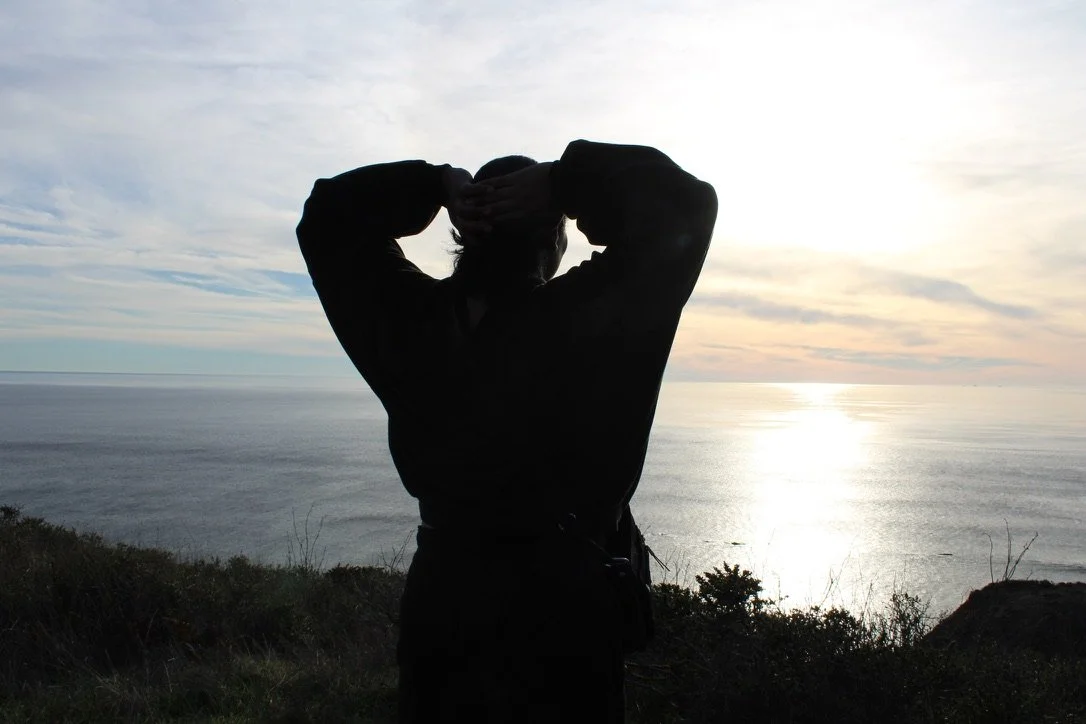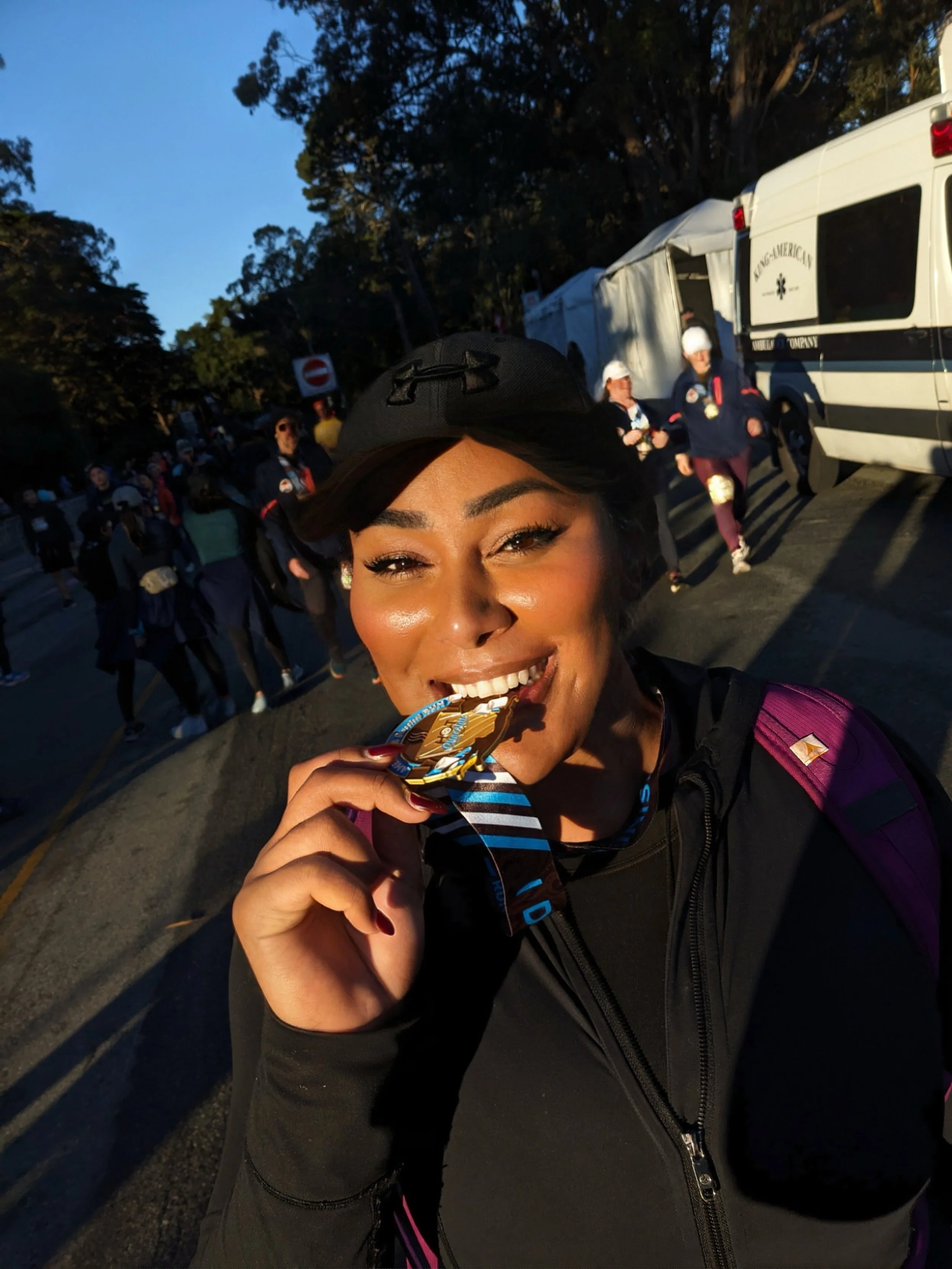Why I Trained Through My Dysphoria Anyway: A decade into transition
Looking out at the horizon, I realized I was done waiting.
Why I Trained Through My Dysphoria Anyway: A Decade Into Transition
I didn’t wait until I felt beautiful. I didn’t wait until I had every surgery. I didn’t wait for the mirror to stop hurting. I just started training.
This isn't a story about a new journey. I’ve been on HRT for ten years and have been out for seventeen. I’ve had every major surgery except one, and I’m on track for the last one. For years, I believed that my life would truly begin only after that final surgery. Everything felt like it was on hold, waiting for a perfect future date. But as the years went by, I realized I was building a cage around myself, waiting for a key that might never fully unlock the door.
My body was once a source of pride. As a student-athlete and team captain in my teens, I loved it for its strength and capability. But as a trans adult, I slowly lost that connection. My body stiffened from neglect, and the discomfort of being less capable—of being a larger, more sedentary person—began to outpace the original discomfort of my gender presentation. I started to anticipate physical pain and social judgment, from the pinching of tucking to the fear of being seen in a space dedicated to bodies.
I watched as more and more of my friends—especially transfemmes of color—became less active. I saw them gain weight, withdraw from public life, and become more self-conscious. Hormones gave us beautiful curves, but also unwanted fat, and we hid it all under corsets and shapewear. The physical and psychological toll was immense, and I grew tired of the discomfort. I was tired of being on hold for surgeries that only addressed one part of the problem.
A Radical Act of Self-Preservation
For a long time, the conversation in trans communities about bodies felt limited. There was a real lack of information about health and fitness. What metrics should I use? Should my BMI be evaluated against a male or a female range? How does HRT impact my health in the long run? How could I sculpt a feminine shape without more surgery? It seemed like no one was collecting or publishing this information. Bringing it up often felt taboo, as if it detracted from a narrative of victimhood that some saw as a way to gain support. I felt like I was supposed to be a victim, subjected to a life of misery until a surgical intervention fixed me.
I spent years in the gym feeling lost. I did endless squats hoping to sculpt a feminine shape, but it didn't solve my dysphoria. Pilates classes made me feel weak, and my running times were a painful reminder of my championship-winning teen years. Upper body days just made me feel burly. My attempts to "fix" my body were just another form of waiting.
Then, I took my first combat sports class—Muay Thai kickboxing. It was a wake-up call. Oh God - I realized how vulnerable I had become. In a world where political rhetoric was growing more hostile and the threat of violence felt closer than ever, I was completely defenseless. I wouldn’t have been able to outrun or sustain an attack. I started taking boxing classes on a biweekly basis, and my confidence began to grow. Every movement, every punch, was a new form of autonomy.
Suddenly, I cared about maximizing my speed and distance when running. I cared about how much of my own bodyweight I could lift. I wanted to swim again and ride a bike in the summer. This urgency provided enough dissonance that I couldn’t give a f**k what my body looked like while working out - I just wanted to be capable. Working out taught me how to breathe effectively under stress, which ultimately helped me breathe more easily all the time. This newfound strength felt more transformative than any cosmetic change. Personal health and autonomy are forms of trans joy that have been available all along.
Breaking the Cycle of Waiting
I had fallen into a trap—the same one many of my peers were in. We believed that our happiness and our lives would begin at some perfect, later date, after we’d had the right surgeries and our bodies were finally "done." We were okay with being miserable, uncomfortable, and isolated until then. It was a subtle, slow-motion surrender. I had come out of one closet, only to build another one around myself to avoid discomfort and pain. I was rotting at home in a pool of semi-justified, semi-paranoid self-pity.
But my fitness journey taught me something different. It’s a form of trans joy that has been available all along. It’s about personal health and autonomy, not just surgical tables and insurance claims. I still believe in the power of surgery—I’ll always be a "transmedicalist" in that sense. But I also know that my outcomes and recovery will be so much better when I’m healthy. The truth is, before I could figure out if I should look to the male or female range for my health metrics, I needed to admit that I was obese in both.
Transsculpt is about my journey to reclaim my life, here and now. It’s about building the courage to be comfortable and capable in my body. It's about moving from a life of waiting to a life of doing.
This is my journey to help other pre-op transfemmes build a healthy, active lifestyle that attends to their specific needs. It's about recognizing that we don't have to wait for perfection. We can start moving—with care, with power, and with a different kind of grace. We can start living.


